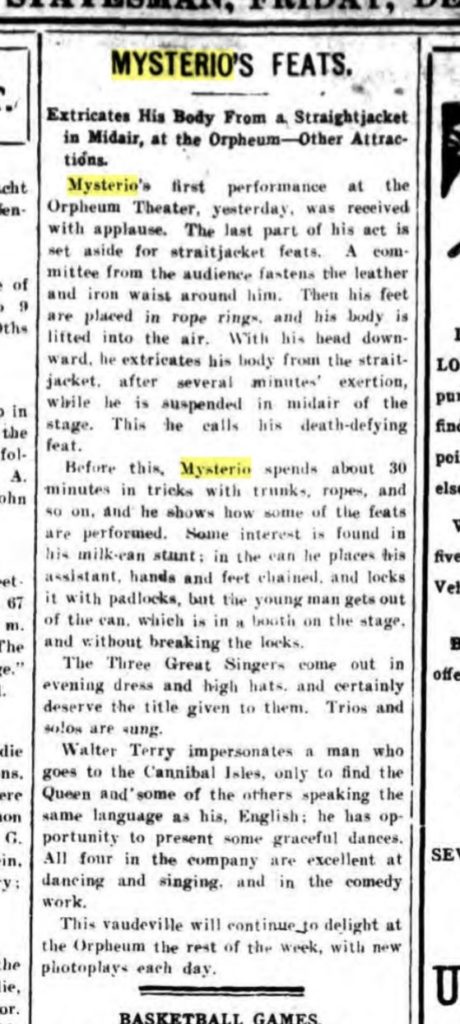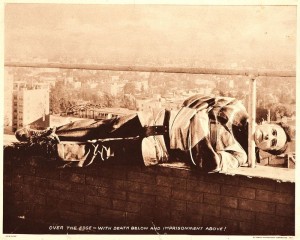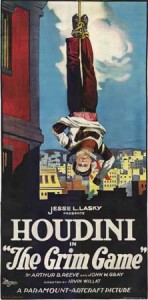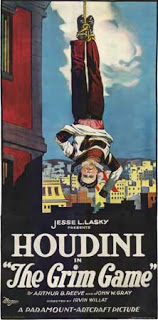 In January 1921, Houdini’s full length film, The Grim Game, was playing at the Cinema House in Fargate, Sheffield and being watched by the man who helped Houdini.
In January 1921, Houdini’s full length film, The Grim Game, was playing at the Cinema House in Fargate, Sheffield and being watched by the man who helped Houdini.
In The Grim Game, Houdini does an upside down strait jacket escape, a big screen showing of the escape that had first been done in a small attic a couple miles away in June of 1914.
Wait, a minute, I thought, Houdini’s first suspended strait jacket escape was in Kansas City on September 8, 1915. You see, it was in June of 1914, that Houdini was introduced to the idea of the suspended strait jacket escape:
Houdini pushed open the little gate to the house at Carrington Road. Houdini was curious to see what his friend and fellow escapologist had come up with now. Up in the attic, Houdini noticed a rope attached to a winch on the wall, and also to a beam in the high, gable ceiling. What happened next would change the course of history. Houdini placed his friend in a straitjacket and helped haul him up in the air, until he was dangling from the beam. Then as the bemused Houdini watched, his friend proceeded to shed the straitjacket.
It was a simple idea, a type of escape Houdini was known for, but with a whole new twist, literally, as this time the action was done upside down, with the body bending upwards to release itself. Houdini was impressed. It was just what he needed – a new way to gather a large crowd – and out in the open it would be spectacular. [Snippets from The man who helped Houdini by Ann Beedham]
It would be over a year before Houdini would perform this feat in Kansas City on September 8, 1915.
I can definitely picture Houdini’s friend watching The Grim Game in 1921 and imagining himself in Houdini’s role as he did so many times as a boy, and shouting to the fellow cinemagoers – that was my idea!
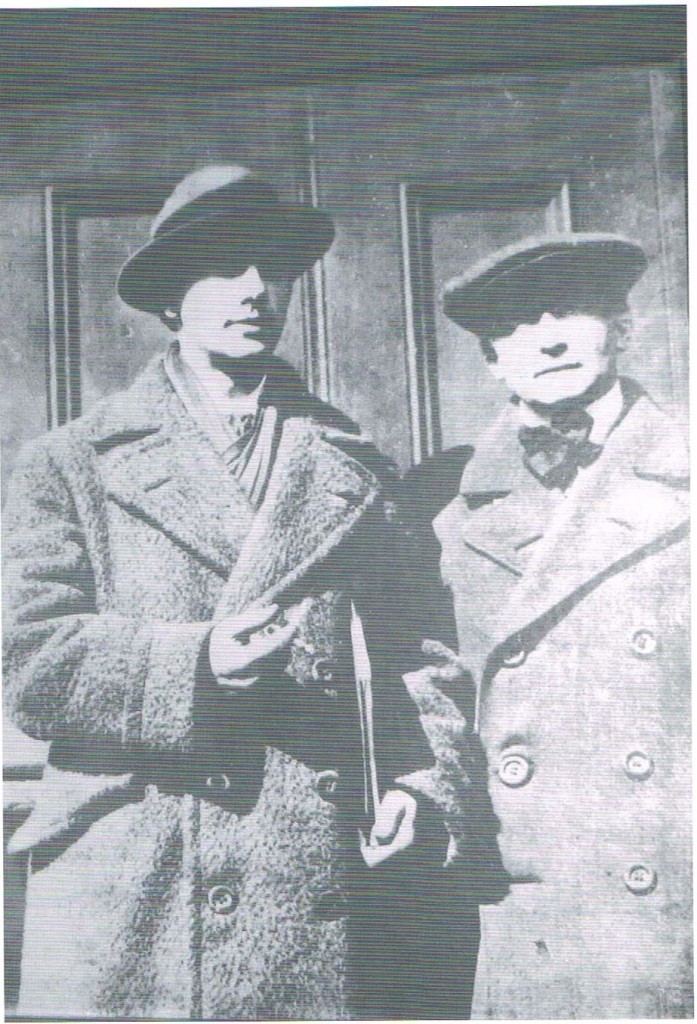
The man who helped Houdini outside the Sheffield Empire in March 1920 – Buxton Museum and Art Gallery
BTW: The man who helped Houdini was Randolph Douglas (aka Randini) and there is a lot more to his story.
To learn more, I highly recommend the book: RANDINI – The man who helped Houdini by Ann Beedham
Special Thanks to Narinder Chadda of the UK for making it possible for me to get a copy of the book.
Update: I received an email from Bill Mullins that he found records of Mysterio performing the stunt hanging by his feet in Buffalo in June 1913, in Gloversville in Aug 1913, again in Buffalo in Nov 1913, in Yonkers in Dec 1913 (indoors, but still suspended over the stage), and in Saratoga in Jun 1914.
Of course, I was intrigued by this, and looked him up.
Al Pitroff was an escape artist who worked under various names: “Great Pitroff”, “Great Alvin”, “Mysterio”, “Russian Mystifier” and “Levy”. [Sphinx, October, 1916, page 150].
I also found a record of him performing it at the Hartford Theatre in June 1913: He liberated himself from a straitjacket while suspended in midair by his ankles. This was performed in front of the theatre and drew quite an audience. [July 1913 The Sphinx, page 89]
And last but not least, I found the following: It was interesting to learn, when meeting Al Petroff, of New York, that he was the first man ever to do the straight jacket escape while hanging upside down outside a building. Houdini, for a time, said it was too dangerous because of the head rush of blood, but later Houdini started doing it that way and made it his greatest outdoor publicity stunt. [Jinx 1936-1937 Winter Extra, page 176]
So did Houdini get the idea from Randolph Douglas or Al Pitroff?
Update 2: I received another email (10/12/2019) from Bill Mullins, with evidence that Mysterio (Al Pitroff) earliest performance of this feat was Dec 5, 1912, in Yonkers. See Yonkers Statesman Dec. 6 1912 below.
